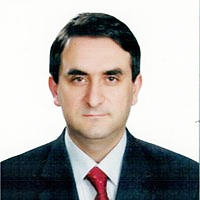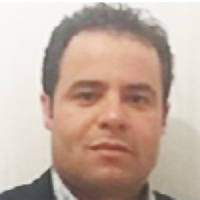Assessment of knowledge of acute kidney injury among non-nephrology healthcare workers in North-Kivu Province, Democratic Republic of the Congo
Published on: 6th April, 2022
OCLC Number/Unique Identifier: 9470693131
Background: Assessment of knowledge of acute kidney injury (AKI) among healthcare workers (HCWs) is necessary to identify areas of deficiency and key topics to focus on while organizing educational programs to improve AKI care. The objective of this study was to assess AKI knowledge and practice among health care providers in North Kivu province, the eastern Democratic Republic of the Congo. Material and methods: This was a cross-sectional study conducted in six public hospitals in North Kivu province using a self-administered questionnaire. Results: A total of 158 HCWs completed the survey, among them 66 (41.78%) were physicians. The mean age of respondents was 36.07 ± 10.16 years and the male gender was 56.33%. Only 12 (7.59%) of the respondents had a good knowledge of the definition and classification of AKI. The respondents’ mean scores were 6.76 out of a total of 18 about risk factors for AKI and 6.29 out of a total of 11 with regard to nephrotoxic drugs. Regarding practices, 28.48% of the respondents assess the risk of AKI in their patients in their daily practices; 31.65% report AKI in the patients’ medical history, and 33.54% call on a nephrologist specialist to get specialized advice. Conclusion: This study found considerable gaps in knowledge and practice regarding AKI among most of HCWs in North Kivu province.
An Incidental finding: Duodeno-jejunal transient invagination
Published on: 24th November, 2022
Invagination or intussusception is the protrusion of proximal intestinal segments through the distal segments, Transient Intussusception can be easily diagnosed by Abdominal CT.In this report, an incidentally found ‘’Duodeno-jejunal Invagination’’ tilted case, was presented with CT images.
Septic Shock on Bartholinitis: Case Report and Modern Surgical Approaches
Published on: 7th March, 2025
Bartholinitis, or Bartholin's gland abscess, is a relatively common gynecological condition among women of reproductive age. Its annual incidence is estimated at approximately 0.5 per 1,000 women, which corresponds to a lifetime cumulative risk of about 2%. The condition primarily affects patients between 20 and 50 years old, with a peak frequency observed between 35 and 50 years.After menopause, due to the natural involution of the gland, Bartholin's cysts and abscesses become less frequent, although they can still occur. Moreover, in women over 50, the appearance of a new mass in the gland region should prompt caution, as it may, in rare cases, indicate a carcinoma of the Bartholin's gland or an adjacent vulvar cancer. Therefore, for patients over 40 presenting with a newly emerged cyst or abscess, clinical guidelines recommend performing a biopsy or excision to rule out malignancy. We present the case of a 50-year-old woman with no significant medical history, who was urgently referred to the gynecological emergency department due to confusion, unexplained fever of 40 °C, and resistant leucorrhoea following a week of corticosteroid antibiotic therapy. Clinical examination revealed a large, tender right vulvar mass, indicative of an acute Bartholin's abscess. The patient exhibited signs of septic shock and was admitted to the ICU. Following a diagnosis of sepsis, broad-spectrum antibiotic therapy was initiated, alongside fluid resuscitation and norepinephrine support. Surgical drainage of the abscess confirmed the presence of E. coli. The patient's condition improved rapidly, and she was discharged on postoperative day 8 with no complications. This case underscores that while Bartholin's abscess is typically benign, severe complications, including septic shock, can occur—especially in patients over 50. The appearance of a new Bartholin's region mass in older women should prompt consideration of malignancy, necessitating biopsy or excision. Recent studies compare various therapeutic approaches including simple incision and drainage, Word catheter placement, marsupialization, silver nitrate application, and complete gland excision. Each method has its advantages and drawbacks, with marsupialization offering lower recurrence rates and higher patient satisfaction in many instances.
Contemporary American stupidity
Published on: 18th May, 2020
OCLC Number/Unique Identifier: 8598723680
The American character is filled with contradictions and paradoxes [1], so it is understandable that, being susceptible to the imperfections, weakness and evils afflicting all peoples [2], it features its share and many types of injustices and stupidity.
Mid-Ventricular Ballooning in Atherosclerotic and Non-Atherosclerotic Abnormalities of the Left Anterior Descending Coronary Artery
Published on: 30th December, 2016
OCLC Number/Unique Identifier: 7286428119
In a series of meanwhile 10 cases rigid straightening of the mid-portion of the left anterior descending coronary artery without lumen reduction mid-ventricular or basal ballooning was reported, or both basal and mid-ventricular ballooning in one case. In all these patients wrap-around (recurrent segment) phenomenon of the left anterior descending coronary artery was not present. The abnormalities of the left anterior descending coronary artery are due to myocardial bridging without lumen reduction of the LAD, only seen in computed tomography. When stress or in some cases happiness appears myocardial ballooning can appear, lasts 2-4 weeks and disappear with a recurrence rate of nearly 10% despite beta blocking agents.
The incidence of hemodynamic and respiratory adverse events in morbidly obese presenting for Bariatric surgery
Published on: 25th July, 2018
OCLC Number/Unique Identifier: 7795943426
Context: Perioperative management of morbidly obese patients undergoing bariatric surgery is challenging. Lacking standardized perioperative protocols, complication rates may be high. This retrospective study aims to quantify the incidence of significant blood pressure decreases on induction of anesthesia and intraoperative hypoxemia, before implementation of a standardized protocol designed for bariatric surgery.
Design: Retrospective, observational study.
Setting: A 250-bed county hospital in northern Sweden.
Subjects: 219 morbidly obese patients (body mass index > 35 kg/m2) who underwent bariatric surgery between 2003 and 2008.
Main outcome measures: Incidence of systolic blood pressure (SAP) falls to less than 70% of the preoperative baseline during induction of anesthesia and incidence of perioperative hypoxemia.
Results: The incidence of confirmed SAP falls to below 70% of baseline at induction of anesthesia was 56.2% (n = 123/219). This incidence rose with increasing age (p < 0.001) but not with body mass index (BMI). 3.7% (n = 8/219) of cases were marked as difficult intubations. A transient period of hypoxemia was observed in 6.8% (n = 15/219) and was more common with increasing BMI (p = 0.005). Fourteen different drug combinations were used in the study population. Of those administered an induction anesthetic drug, 72.6% (n = 159/193) were given an overdose when calculated by lean body weight, but this did not correlate significantly to SAP falls (p = 0.468).
Conclusion: The incidence of a significant blood pressure fall upon induction of anesthesia was common. The incidence of airway and ventilation problems were low. Overdosing of anesthetics and excessive variation in applied anesthesia methods were found.
Overview on liquid chromatography and its greener chemistry application
Published on: 7th April, 2021
OCLC Number/Unique Identifier: 9026744044
This literature review is concerning with liquid chromatography specifically high performance liquid chromatography (HPLC), Ultra high performance liquid chromatography (UHPLC), chromatography theory, chromatographic parameters, monolithic columns, principles of green chemistry and its application ingreen chromatography.
Effectiveness of different cord care interventions on omphalitis prevention among neonates in Nakuru County Hospital, Kenya
Published on: 5th May, 2022
Background: Sepsis among newborns is common and a major cause of neonatal deaths in developing countries. Annually, about 4 million neonatal deaths occur around the world. Of these, more than 30% are caused by infections majority of which start as umbilical cord infections. Topical umbilical cord care can reduce omphalitis (umbilical cord infection) and neonatal mortality among newborns.Objective: This study aimed to compare the incidence of omphalitis in different cord care interventions (Dry, Chlorhexidine, and Alcohol) in Nakuru County, Kenya. Methodology: A randomized controlled trial was carried out between July 2018 and June 2019. A total of 540 newborns were randomly assigned to receive 1 of 3 cord care regimens; twice cord cleansing with 4% chlorhexidine (Group 1), twice cord cleansing with 70% alcohol (Group 2), and dry cord care (Group 3) as control. Results: The risk of omphalitis was significantly reduced in the chlorhexidine group than in dry and alcohol cord care groups. The incidence of omphalitis was 1.95 times more likely to occur among the dry cord care group [AOR = 1.95; 95% CI = 1.13-3.38; p = 0.017] compared to the chlorhexidine group. Similarly, babies in the alcohol group were nearly 2 times more likely to develop omphalitis [AOR = 1.98; 95% CI = 1.15-33.40; p = 0.014] compared to those in the chlorhexidine group.Conclusion and recommendation: Chlorhexidine topical cord care significantly reduces the risk of umbilical infection in neonates when compared to both topical alcohol application and dry cord care approach. It should be recommended to be used topically for the prevention of omphalitis in our setup.
Strengthening Healthcare Delivery in the Democratic Republic of Congo through Adequate Nursing Workforce
Published on: 19th February, 2024
The Democratic Republic of Congo (DRC) grapples with a critical shortage of nurses, exacerbating disparities in healthcare access and outcomes. This mini-review examines the factors impacting the nursing workforce in the DRC and presents potential solutions to strengthen it. Decades-long regional conflicts have endangered the nursing workforce, resulting in an imbalanced distribution that disproportionately favors urban areas over rural regions. Inadequate healthcare funding, compounded by mismanagement, has led to resource scarcity and inequitable distribution, further hampering nursing efforts. Additionally, stagnant policy reforms and ineffective advocacy have hindered improvements in nurse employment, wages, education, and working conditions. Infrastructure deficiencies and medical supply shortages have also contributed to reduced incentives for nursing professionals. Therefore, we undertook a mini-review aimed at offering a succinct and targeted overview of nursing care in the DRC. This involved analyzing available literature and data concerning the nursing workforce with a particular focus on the DRC. We believe that addressing these interlinked challenges necessitates comprehensive strategies that prioritize establishing regional stability, responsibly allocating and increasing healthcare funding, incentivizing nurse recruitment and retention through policy adjustments, enhancing healthcare infrastructure and nursing education, and fostering both local and global collaboration. Investing in nursing is paramount for transforming healthcare delivery in the DRC, particularly considering nurses' pivotal roles in delivering preventive, therapeutic, and palliative care services. Strengthening nursing capacity and addressing systemic challenges are essential steps toward mitigating healthcare disparities and enhancing population health, aligning with the objectives outlined in the United Nations Sustainable Development Goals.
Papillary thyroid cancer and cervical lymph mode metastases – optimal preoperative evaluation
Published on: 16th February, 2021
OCLC Number/Unique Identifier: 9026739528
Papillary thyroid cancer (PTC) is the most common subtype of thyroid cancer and a highly curable malignancy [1]. However, despite its excellent prognosis, cervical lymph node metastases (CLNMs) are present in a significant percentage of patients with papillary thyroid cancer (PTC) (upto 50% - 60%) [2].




